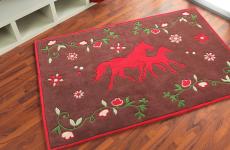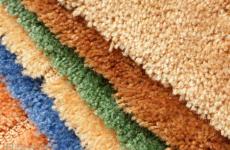Do-it-yourself rope snow holders. Homemade snow holder for the roof. Video - Snow holders of different types
The installation of a protective device depends largely on the type of system. So, for example, a corner view is mounted on a roof with a slope of no more than 30 degrees and is installed parallel to the ridge. Snow stops with hooks are staggered and fixed in several places. In order to install a tubular snow guard, the required dimensions of which are made to order in the shortest possible time, the roof and the steel pipes themselves are measured, then they are arranged in two rows and attached to the rafter leg. To increase the strength, it is worth reducing the step of the brackets when installing the structure.
To make a lattice look, you need to cut the blanks in the shape of rectangles with a grinder, then fix the upper part of the frame by welding. They can be placed both horizontally and vertically. After installation, be sure to measure with a level. It is important to know that when installing a structure, in no case should it be attached to the cornice itself or the edge of the roof, this can pose a threat to both the roof itself and human life. When choosing a material and installing an anti-snow system, you should focus on high-quality building materials, because the safety of the people around you, and sometimes even their life, depends on the snow holders. Before installing the structure on the roof, it is advisable to take into account its compatibility with the roofing material.
In regions with snowy winters, there is a common problem - an avalanche-like snow fall from the roof of a house, which can not only cause material damage, but also take the lives of passers-by. This problem can be avoided by installing snow guards on the roof. These structures help to keep the main layer of snow on the roof surface. Only by thawing, the water from the snow can flow freely through the gutters. The type of snow holders is selected depending on several important factors: the angle of inclination of the slope, roofing material and the amount of snow cover in the region. Let's take a closer look at what types of snow holders are and what are the features of their installation on different roofs.
Types of roof snow guards

Snow holders for the roof can be bought together with the roofing material during the construction of the house, or can be purchased separately when the house has already been built. In different stores, such devices may be called differently: snow-blocking fences, snow plows, snow stops, snow cutters, snow barriers, snow feet, and of course, snow holders. Such a variety of names is due to the fact that these simple devices can perform different functions.
The first category is snow barriers or snow blocking fences- completely keep snow on the roof surface. Snow should melt naturally on the roof. The descent of its layers, even partially from the roof, is unacceptable.
The second category is snow cutters- designed to cut the total layer of snow into small pieces. Thus, its energy during the fall is much lower than it would be if the entire layer of snow was avalanched. This is enough to ensure safety.
Snow holders for the roof differ not only in shape and size, but also in material and structural reliability. First of all, when choosing one or another type of snow holders, it is necessary to focus on how much snow it should hold back.

The tubular snow guard for the roof is a structure of brackets into which two pipes with a diameter of 15 - 30 mm are inserted. The total height of the structure is about 15 cm. The bracket looks like a vertical plate with holes for pipes. At the bottom of the bracket there is a horizontal shelf for attaching to the roof slope. Screws for metal 8x60 mm with a hex head are screwed into it. Sometimes the type of bracket may differ depending on what type of roofing material the snow guard will be used for. The installation method may also differ.

The structural strength of the tubular snow guard depends on the distance between the down tube and the roof surface. The optimal distance is considered to be 2 - 3 cm from the roof to the first pipe and 8 - 10 cm between the pipes.
Important! Tubular snow guards can be installed on roofs with very steep slopes up to 60 °. Indeed, in such cases, the snow pressure is very high and its movement occurs very often. On roofs with a slope of more than 60 °, snow holders are not installed at all, since it is believed that the snow does not linger on them and crumbles immediately.
Tubular snow cutters belong to the category of snow holders, which is designed to cut a layer of snow into several pieces. These structures are considered the most reliable, they are able to withstand the powerful pressure of the snow layer and can be used on roofs of any type - from sheet, rolled soft materials, as well as from natural tiles. They are installed along the entire perimeter of the structure, along the entire slope. Moreover, the installation of tubular snow cutters is carried out in a continuous row, and not in a run. Sometimes, when the snow load is very high, two rows of snow holders are placed at a distance of 2 - 3 m from each other.
The fastening of the lower row of tubular snow holders is carried out above the load-bearing wall, i.e. at a distance of 40 - 50 cm from the eaves. After installation, they are practically invisible against the background of the roof, because the color of the snow holders can be matched to the color of the roof. Usually tubular structures are made of galvanized steel, and on top they are covered with a layer of paint to match the color of the roofing material. As a result, the product is durable, corrosion-free.

Lattice roof snow holders have a variety of sizes. Universal type of construction: brackets to which the vertical grille is attached. All parts are made of galvanized steel, painted on top, so that the grilles can also be matched to the tone of the roof. But the size of the lattice can be different. The largest ones are 15 - 20 cm high, but there are also small ones where the height of the lattice is not more than 5 - 7 cm. Naturally, depending on the size, the lattice snow holders can hold a different volume of snow.
The large steel grate is capable of resisting large volumes of ice and snow. As a rule, the entire layer of snow is retained on the roof, including the smallest pieces of ice, and only melted water flows down.
Lattice snow guards are installed on long slopes with a fairly steep slope to ensure that blocks of snow are kept from falling. The effectiveness of these actions depends on the height of the grate. Also, the material of the roof does not matter either, almost all materials have their own types of fasteners.

Important! Note that tubular snow guards are more robust. If the volume of snow is too large, the lattice plates can bend, bend outward under the pressure of the lump. This does not happen with pipes due to the strength of the structure. The strength of lattice snow pads is also influenced by the shape and strength of the brackets or rails. You should not buy flimsy products of the same thickness as the grill itself.
There are also designs of lattice snow holders in which the lattice is welded to the longitudinal pipes. In this case, the product is extremely reliable.
Installation of lattice snow holders is carried out in a row along the eaves of the ramp. If the length of the slope is more than 5.5 m and at the same time the snow load in the region is high, then in addition to the lattice ones, other types of snow pads are installed, for example, lamellar ones.

With insignificant amounts of snow, corner snow holders are installed on the roof. Basically, they are mounted on roofs made of metal or corrugated board, since the snow holders themselves are made of the same material and have the same color.
As you can see in the photo showing the corner snow holders on the roof, they are metal products bent into a triangular structure with two edges and shelves for attaching to the base. The height of such snow holders is from 4 to 6 cm. Usually they are installed on roofs where the slope angle does not exceed 30 °, since they are simply not able to withstand high pressure.

Corner snow holders are fastened directly to the roofing material, including the upper wave of corrugated materials.
Install similar snow pads along the ridge in a checkerboard pattern in several rows, from 2 rows. The distance between the rows is from 50 cm to 1 m.
Corner snow holders are not very durable, they are not able to keep a large layer of snow from converging, therefore they are used in regions where there is not much rainfall. Also, the roof must be regularly cleaned of snow.
Yoke - point snow holders

Tow-bar snow guards, or as they are also called, hooks, are not ways to retain any significant amount of snow, therefore they are used as an addition to lattice and tubular snow pads, as well as on a soft roof with a slight slope.
On a soft roof, snow usually lingers on its own, this is facilitated by the rough surface of the material, sprinkling from granules. For example, on bituminous tiles or roofing felt, snow accumulates and holds without problems. And if the slope of the roof is small, then snow melting is unlikely. Nevertheless, for safety net, point-type snow-tow barriers are installed, in a checkerboard pattern at a distance of 50 - 70 cm from each other.
A feature of the yokes is that they can be installed only at the stage of roof installation. They are triangles with a long plate for fastening to the lathing. The plate should be located under the roofing material, and is attached to the crate, bitumen shingles are laid on top and hides the attachment points. Thus, the roof is protected from leaks.

Wooden logs are rarely used to trap snow. They can be found on an equally rare wooden roof - shingle or shingle roof. The logs are installed on special hooks that are attached to the battens or rafters of the roof structure. The larger the diameter of the log, the greater the amount of snow such a snow pile can hold.
The log itself is located at a low height above the roof surface - 2 - 3 cm. Therefore, the melting snow can flow freely to the gutters. The rest of the snow is kept until it melts completely.
Installing snow guards on the roof
It is best to mount the snow guards together with the roofing material. Sometimes it is recommended to install snowpads not around the entire perimeter of the roof, but only over important objects: pedestrian paths, parking lots for cars, skylights and balconies. Installation sites are selected on the basis that when an avalanche descends from a roof with a slope of 35 °, the snow fall zone is 0.4 - 1.5 m from the roof overhang.
The distance from the snow guard to the eaves overhang must be from 50 cm to 80 cm. It is not possible to mount the snow guards directly on the eaves. The only exception is the case when the cornice is formed by the rafter legs of the roof.
Important! If you install snow-retaining structures on or near the eaves, the eaves will inevitably collapse together with snow-retainers and an avalanche. The lightweight overhang structure simply cannot withstand this pressure.
For snow protectors on the roof, the price depends on the type of product, material of manufacture, size and popularity of the manufacturer's brand. And it can vary in the range from 1.5 to 230 USD.

Today, metal tiles are almost the most common roofing material. But its very design assumes that snow will descend on it very often. The smooth surface of the material practically does not trap snow. And the sensitivity of the material to temperature extremes contributes to the fact that during the day the snow melts and slides down the surface of the metal tile, carrying the entire layer of snow and ice.
Considering all this, snow holders for metal tiles are simply an urgent need.
For roofs covered with metal tiles, you can use the following types of snow holders:
- Tubular;
- Lattice;
- Lamellar.
The latter are used only on slopes with a small slope and in regions with little snowy winters. In other cases, tubular and lattice structures are used, as the most durable and easy to install.


Produced directly through the roofing material:
- We outline where the snow holder will be located.
- We reinforce the crate with an additional bar.
- Assembling the snow guard kit, but do not tighten the bolts.
- We fix the roofing material, and from above we drill holes for fasteners. The holes should be located in the bottom wave that is adjacent to the sheathing.
- The assembled bracket is fixed to the ramp with 8x60 mm bolts. The holes are sealed with rubber pads. The step between the brackets depends on the slope of the roof and the length of the slope. The greater the slope, the more often the brackets should be located. For example, a 50 cm pitch will be more than enough for the most robust construction.

- We insert the pipes into the brackets. Or if lattice snow holders are mounted, then we connect adjacent sets together.
We remind you that it is necessary to mount the snow holders above the load-bearing wall. To install a snow guard over the roof window, it is imperative to reinforce the crate.
If the slope is longer than 5.5 m, two rows of snow guards should be installed.
Depending on the type of metal tile, the design of the bracket supports is different. For example, for mounting on Monterrey metal tiles, snow holders are used, the brackets of which are equipped with a special protrusion. This makes it possible not to reinforce the crate.
The surface of the corrugated board is as smooth and sensitive to temperature extremes as that of metal tiles. Therefore, snow guards are essential to keep snow on the roof. In addition, the melted snow freezes in the evening, when the next day, the melted snow begins to move along the roof, the ice floes scratch the covering of the corrugated board. As a result, over time, the galvanized coating peels off, scratches appear in which rust develops.
In the same way as in the case of metal tiles, tubular, lattice and lamellar snow holders can be used for corrugated boarding. Most often, tubular snow holders are used made of galvanized steel, painted to match the corrugated board.

Installation of snow holders on a roof made of corrugated board practically does not differ from installation on metal tiles:
- Fastening is done through the material.
- The lathing must be reinforced.
- And the holes for the fasteners should be sealed with special gaskets made of weather-resistant rubber.
- The fastening should be located at the bottom of the corrugated board wave, which is adjacent to the crate, otherwise the sheet will bend and twist.
If you plan to install snow guards on an already finished roof, you will have to disassemble part of it in order to strengthen the crate. Or, the reinforcement of the structure must be taken care of in advance.

To install corner or plate snow holders, reinforcement of the lathing is not required, since they are fixed directly to the sheet of corrugated board or metal tile in the upper wave. The bolt must cut into the wood of the sheathing, otherwise the structure will turn out to be fragile. Mounts for corner snow pads should be located across one wave.

On seam roofs, only tubular and lattice snow holders are used. The main difference between the installation of tubular snow holders on a seam roof is that the brackets have a peculiar shape and are attached directly to the seam. Thus, the tightness of the coating is not compromised.

As you can see in the photo, fastening to the folds produced using clamps:
- We put the clip on the fold.
- We drill 2 - 3 holes.
- Insert bolts and nuts and tighten.
- The step between the supports depends on the slope of the roof. The most reliable option is to attach to each rebate.

An indisputable advantage of attaching snow guards to a seam roof is also that there is no need to reinforce the lathing. All work is done from above, on the finished roofing material. As a result, the design is quite reliable, since the main snow pressure is distributed along the fold.

Please note that not all rebated roof guards are made of galvanized steel. There are copper models. They are not sold as a set, but individually: a piece of pipe, lower and upper brackets. Prices for copper snow holders are higher than for ordinary ones, but copper seam roofing is not a cheap pleasure either.
The soft roof has its own characteristics, which leave an imprint on the choice of the type of snow holders and the nuances of installation:
- The pitch angle of a roof with a soft roof should not exceed 15 °. On such a slope, an avalanche snowfall is unlikely. Therefore, powerful tubular snow holders are practically not used.
- Spread of stone chips on the surface of soft roofing materials traps snow and prevents it from slipping.
- Due to the fact that for the installation of a soft roof, a solid type of lathing in the form of sheets of moisture-resistant plywood is used, there is no need to strengthen the lathing.
- Nevertheless, all work on the installation of snow guards on a soft roof must be done at the stage of laying the roofing material.
For soft roofs, towbars are most often used, less often tubular snow holders.

Installation of tubular snow holders on a soft roof practically does not differ from installation on corrugated board or metal roofing. The disadvantage of fastening such a design is that the fasteners are on top, i.e. the tightness of the coating may be compromised.
Triangular yokes or stoppers are attached using this technology:

- They must be staggered in 2 - 3 rows with a step of 50 - 70 cm.
- The yoke is attached to the lathing so that the next sheet of soft tiles hides the mounting plate, and the yoke triangle itself remains on top.
- We fix it with self-tapping screws.
If the roof has already been installed, the yokes can also be fixed from above, in this case, gaskets made of weather-resistant rubber are used.
In conclusion, I would like to say that in the conditions of our snowy winters, the use of snow holders on the roofs is mandatory. Nevertheless, it is still necessary to clean the roof once a week or two, depending on the amount of precipitation. You can get rid of the need to clean the roof and trap snow by installing a heating cable under the roof. Thus, the snow will immediately melt and flow down the drain. The formation of icicles and avalanches is excluded.
The harsh climate with frosty winters and heavy snowfalls creates additional difficulties for roof structures. Snow, on the roof, creates a cap with a large mass, which overloads and even deforms the rafter frame. When a snow cover with pieces of ice comes off the slope, a real avalanche is formed, which can damage the roofing or injure people passing by. Special devices will help to stop this spontaneous fall, the requirements for which are described in SNiP II-26-76. In this article we will show you how to choose and install snow guards on the roof with your own hands.
Snow trap - a device used to hold a snow cap that has accumulated on the roof during a snowfall. It stops falling and keeps snow on the slope until the moment when it melts under the influence of sunlight and falls into the drain. Snow guards are a small barrier or guardrail installed along the roof overhangs. They perform the following functions:
- Protects the integrity of the roofing... Ice formed on the roof when the inner surface of the slopes is heated by heated air damages the roofing material when it thaws and slides off, leaving scratches. In these places, devoid of a protective layer, rust centers appear. Especially roofs suffer from this, in which a metal profile is used as a covering.
- Protects passers-by, plants and equipment from falling snow on them... The snow mass, which often contains chunks of ice, comes off the slope at high speed, it can cause significant damage to a car or a person. Therefore, SNiP II-26-76 prescribes to install with a slope of more than 6 degrees.
- Prevents deformation of the external gutter... In homes that have not been fitted with snow guards, gutters are often damaged by snow melting. The brackets cannot withstand the enormous stress they are subjected to.
- Protects the roof truss from overload... Competently installed snow guards in areas with a high snow load do not stop the layer from falling, but divide it into small plates and reduce the falling speed. This measure makes the process safe and at the same time does not overload the rafter, since the weight of the snow cap in some regions can reach 300 kg / sq. m.
- A snow cap saved on the slopes by snow holders becomes a kind of thermal insulation that keeps the warmth inside the house, which saves money spent on drowning. This function of snow barriers is relevant for roofs made of metal tiles, since the metal profile has a high thermal conductivity.
Note! SNiP requirements recommend the installation of snow guards along all roof overhangs. However, there is an opportunity to save money - you can install snow barriers only in particularly important places (driveways, plantings, parking lots, entrances).
Kinds
Different types of roofs and specific climatic conditions require a special approach when installing snow retention elements. Therefore, for the effective operation of the system that limits snow from the slopes, devices with various functions and appearance have been developed. In private housing construction, the following types of snow holders are popular:

Important! According to SNiP, devices used to prevent spontaneous snow melt from the roof are divided into snow barriers and snow cutters by function. The group of snow barriers, which include plate, corner and drag models, is designed to preserve the snow layer on the surface of the slope until it melts. Snow cutters are devices used to divide a snow cap into plates that are harmless when dropped.
DIY making
Installation of snow holders requires certain investments, since the average price of 1 running meter of a fence complete with fasteners is 300-400 rubles. To make this event more economical, you can make them yourself. The easiest way is to make corner snow holders. To do this, you will need a sheet of stainless steel with a polymer coating, scissors or a hacksaw for cutting metal, a drill, a bending machine, a marker and a ruler. The task is performed as follows:

Advice from experienced craftsmen: professional roofers, during the assembly of the rafter frame at the installation site of the snow retention elements, must reinforce the crate with 1-2 additional boards, which are necessary to distribute the load and prevent deformation of the roof.
Video instruction
Snow holder is a structure that keeps the snow mass on the roof, preventing it from spontaneously falling off. It is very important to lay down the installation of snow guards at the initial design stage of the entire roofing pie.
The absence of such barriers can provoke damage to the drainage system, windows, balconies, cars standing next to the house, and even lead to tragic consequences if people are nearby. That is why we strongly recommend installing snow guards immediately after installing metal tiles.
The following are presented on the market types of snow holders:
- Tubular
- Lattice
- Corner
- Snow pins, sometimes also called hooks
Corner and snow stops cannot retain a large amount of snow, therefore they are recommended to be installed in areas where the snow cover is not abundant. They are attached to the metal sheet, and not to the crate, and in the event of a large amount of snow melting, such a snow holder can be torn out along with part of the roof covering.
On the other hand, lattice snow guards can withstand heavy loads. Their disadvantage is that they do not allow the snow to come off in parts, but simultaneously hold the entire volume, thereby the load on the roofing cake and the roof increases greatly, and this, in turn, has a negative effect on the durability of the entire structure.
The most popular type of snow holders is tubular. It looks like a simple design, consisting of brackets and horizontal pipes. This type of barrier can be used on any roof with any kind of roof covering. Its main function is to initially retain and gradually pass snow between the pipes, thereby reducing the load on the roof and minimizing the danger to humans.

Installation of snow guards on metal tiles
Snow guards can be installed in several rows: from 1 to 5. It depends on the length of the slope and the snow cover in a particular region.

Below is a table by which you can calculate the number of rows of a snow guard.
| Snow region | 1 | 2 | 3 | 4 | 5 | 6 | 7 | 8 | ||||||||
| Distance between brackets, mm | 800 | 1200 | 800 | 1200 | 800 | 1200 | 800 | 1200 | 800 | 1200 | 800 | 1200 | 800 | 1200 | 800 | 1200 |
| Roof slope | ||||||||||||||||
| Less than 15 | 37,7 | 27,1 | 25,2 | 18,3 | 16,8 | 12,2 | 12,6 | 9,1 | 9,4 | 6,9 | 7,5 | 5,5 | 6,3 | 4,6 | 5,4 | 3,9 |
| 15-25 | 23,1 | 16,8 | 15,4 | 11,2 | 10,3 | 7,5 | 7,7 | 5,6 | 5,8 | 4,2 | 4,6 | 3,4 | 3,9 | 2,8 | 3,3 | 2,4 |
| 26-37 | 16,2 | 11,8 | 10,8 | 7,9 | 7,2 | 5,2 | 5,4 | 3,9 | 4,1 | 3,0 | 3,2 | 2,4 | 2,7 | 2,0 | 2,3 | 1,7 |
| 38-45 | 13,8 | 10,0 | 9,2 | 6,7 | 6,1 | 4,5 | 4,6 | 3,3 | 3,5 | 2,5 | 2,8 | 2,0 | 2,3 | 1,7 | 2,0 | 1,4 |
| 46-55 | 11,9 | 8,7 | 7,9 | 5,8 | 5,3 | 3,9 | 4,0 | 2,9 | 3,0 | 2,2 | 2,4 | 1,7 | 2,0 | 1,4 | 1,7 | 1,2 |

Based on the table and figure, we correlate the angle of inclination of the roof and the snow area and determine what is the maximum length of the slope for one row of snow holders. If the length of the slope turned out according to the table is greater than the real length of your slope, then one row of snow holders is more than enough. If less, then you need 2 rows. If it is 2 times less, then 3 rows of snow holders are required, etc.

In construction sites located on the borders of snowy regions, it is recommended to install snow deflectors based on an area with a greater snow load.
Snow guards must be installed:
- continuously
- along the entire roof line in one level and over protruding elements
The following tools are required to install the snow guards:
- level
- screwdriver
- jigsaw
Attention! The use of a grinder is strongly discouraged in order not to damage the polymer coating.
To achieve the desired size of the entire structure of the snow holders, the pipes can be joined together. For this, a crimp is provided at the end. From above it must be fixed with an M8 bolted connection.
It is recommended to use a continuous lathing in places where roofing safety elements are installed (SNiP II-26-76 "Roofs"). We advise you to consider the installation of snow guards at the stage of calculating the construction project.
Complete set of snow guard for metal tiles

Installation of snow guards on the rebate
Installation of snow guards on metal tiles - step by step instructions
1. Outline the location of the snow retainer on the metal tile next to the cornice at the level of the load-bearing wall and the place where it is necessary to make holes for fastenings. The bracket is mounted strictly at the bottom of the wave. The distance between the last bracket and the edge of the pipe must not exceed 300 mm.
2. Drill holes with a metal drill exclusively in the metal tile, without touching the lathing.
4. Fix the bracket by tightening the self-tapping screws. The maximum allowable pitch between the supports of the snow guard is 900 mm.
5. Insert the pipes into the corresponding holes in the supports.
6. Combine the pipes along the entire length of the ramp and fix with the M8 bolted joint.

Installation of snow guards on a folded roof
1. Outline the location of the structure on the roof near the eaves at the level of the load-bearing wall and the place where it is necessary to put the brackets for the fastenings. The bracket is mounted to a folded joint. The distance between the last support and the edge of the pipe cannot exceed 300 mm.
3. Insert the pipes into the corresponding holes in the supports.
4. Join the pipes along the length of the roof and fix with the M8 bolted joint.

Installation video
When designing a roof, attention should be paid not only to the appearance, cost and functionality of the roofing, but also to think about safe operation. Snow protectors and other roof safety elements are essential and have a very important function. Fastening such structures will allow the roof to remain reliable and durable and will ensure the safety of all residents of the house.






